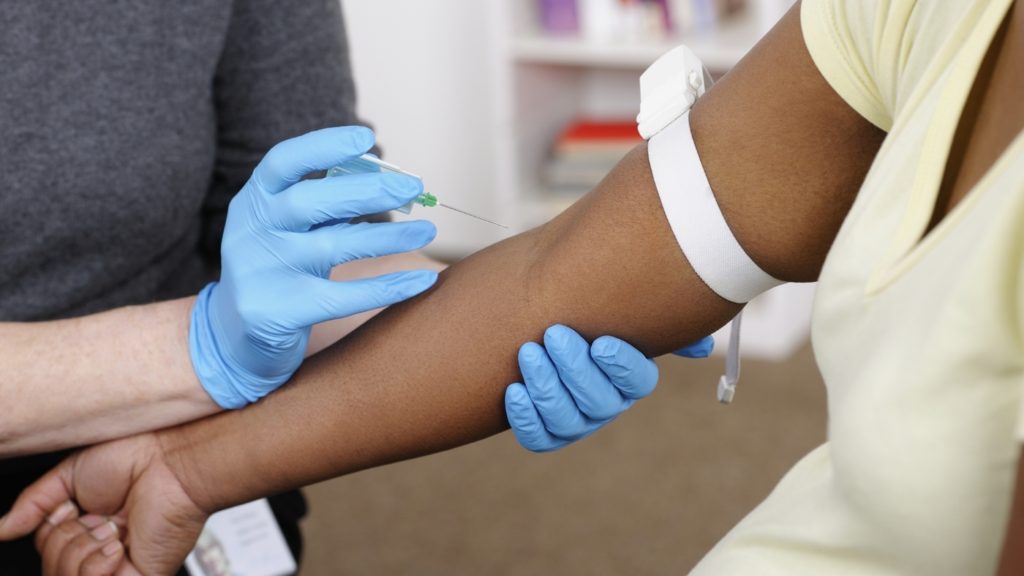You’ve all heard the term hemoglobin A1C being thrown about these days whether it be at your friendly neighborhood doctor’s office or on TV, ads, well, just practically everywhere. And unfortunately, African Americans typically have a higher hemoglobin A1C than whites [with diabetes] but what does the term mean?
What is A1C?
Hemoglobin A1C is a protein on the surface of red blood cells that sugar molecules stick to, usually for the life of the red blood cell (about three months). The higher the level of glucose (simple sugar) in the blood, the higher the level of hemoglobin A1C is detectable on red blood cells.
The hemoglobin A1C test shows the average level of blood sugar over the past few months. Folks who are diabetic are given this test to check their blood sugar levels. It is also a test that is given to detect the presence of diabetes. The test, however, may not be appropriate for everyone as there are extenuating medical conditions like sickle cell anemia that can produce an erroneous outcome.
As the patient, your goal is to keep your hemoglobin A1C as close to your target level as possible (your doctor will work with you to determine what level is safe for you).
Understanding A1C results
According to the National Institute of Diabetes and Digestive and Kidney Diseases, your A1C test result is given in percentages. The higher the percentage, the higher your blood sugar levels have been:
- A normal A1C level is below 5.7 percent
- Prediabetes is between 5.7 to 6.4 percent. Having prediabetes is a risk factor for getting Type 2 diabetes. People with prediabetes may need retests every year.
- Type 2 diabetes is above 6.5 percent
- If you have diabetes, you should have the A1C test at least twice a year. The A1C goal for many people with diabetes is below 7. It may be different for you. Ask what your goal should be. If your A1C result is too high, you may need to change your diabetes care plan.
Decreasing your A1C levels by 1% may decrease your risk of developing such serious health issues as kidney disease or diabetes-related eye conditions.
Can you reduce your A1C?
If your A1C result is a little alarming to you, working with your physician to reduce it is a huge step in the right direction. Making lifestyle changes also really does add up, and can help keep those diabetes-related complications away, so get cracking!
Here are some strategies you can try to help lower your A1C:
- Exercise. You are tired of hearing this, we know, but exercise can really help improve your A1C levels. According to research presented at the American Heart Association’s Scientific Sessions 2015, Type 2 diabetic patients who did 10 minutes of high intensity (an intense workout that gets your heart pumping) exercise three times a day, five days a week had a twofold improvement in their A1C levels. Before you exercise, check with your doctor to make sure you are ready to go!
2. Eat smart. Lowering your A1C when it comes to eating is all about consuming what’s good for you. Monitoring your carbs (like pasta, rice, bread) is crucial so what you want to do is select nutrient-dense carbs like fruit, or yams but don’t overdo it! DO steer clear of junk juices, Kool-Aid and sugar-ladened sodas as they will spike your blood sugar.
Fruit juices removes all fiber, and its sugar goes straight to your bloodstream!
Here’s a little tip, fiber helps slow down how quickly your body absorbs sugar. The fiber in whole foods also helps you feel full longer, so you tend to eat less. The American Diabetes Association recommends that you choose good healthy eats like dark leafy green veggies (kale, collards, spinach), tomatoes, fish (sardines, salmon, tuna, trout), beans (navy, pinto, red kidney or black), nuts (walnuts, raw almonds), berries (blueberries, strawberries), and whole grains.
3. Eat less. Use smaller plates when eating a meal so that you put less on it. You will get used to eating less once you stay the course with shrinking your plate.
4) Get just enough sleep. A 2013 study found that short or long periods of sleep were associated with higher A1C levels regardless of exercise, food consumption, obesity or depressive symptoms. The findings suggest that people who get either more or less than 6.5 to 7.4 hours of sleep per night may be at increased risk for high blood glucose levels.
5. Keep track of what you eat. Jot down your A1C levels, home blood testing results, what you eat during the course of a day and any form of exercise you do. All of the written info you compile will help you and your doctor determine how your diet and lifestyle choices affect your blood sugar. Together, you and your doctor can devise a plan that will help improve your A1C, trust and believe!
For more information on A1C visit the American Diabetes Association–www.diabetes.org
